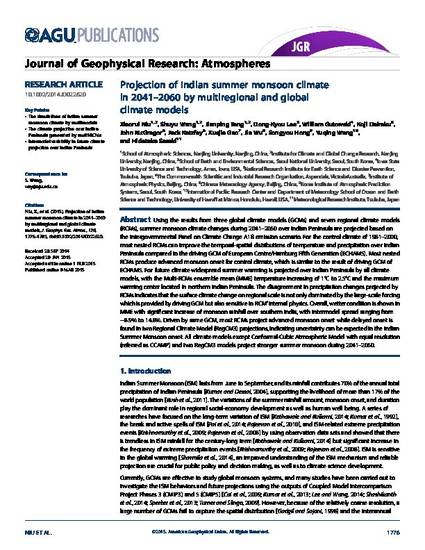
Using the results from three global climate models (GCMs) and seven regional climate models (RCMs), summer monsoon climate changes during 2041–2060 over Indian Peninsula are projected based on the Intergovernmental Panel on Climate Change A1B emission scenario. For the control climate of 1981–2000, most nested RCMs can improve the temporal-spatial distributions of temperature and precipitation over Indian Peninsula compared to the driving GCM of European Centre/Hamburg Fifth Generation (ECHAM5). Most nested RCMs produce advanced monsoon onset for control climate, which is similar to the result of driving GCM of ECHAM5. For future climate widespread summer warming is projected over Indian Peninsula by all climate models, with the Multi-RCMs ensemble mean (MME) temperature increasing of 1°C to 2.5°C and the maximum warming center located in northern Indian Peninsula. The disagreement in precipitation changes projected by RCMs indicates that the surface climate change on regional scale is not only dominated by the large-scale forcing which is provided by driving GCM but also sensitive to RCM' internal physics. Overall, wetter condition is shown in MME with significant increase of monsoon rainfall over southern India, with intermodel spread ranging from −8.9% to 14.8%. Driven by same GCM, most RCMs project advanced monsoon onset while delayed onset is found in two Regional Climate Model (RegCM3) projections, indicating uncertainty can be expected in the Indian Summer Monsoon onset. All climate models except Conformal-Cubic Atmospheric Model with equal resolution (referred as CCAMP) and two RegCM3 models project stronger summer monsoon during 2041–2060.
Available at: http://works.bepress.com/william-gutowski/18/

This article is from Journal of Geophysical Research: Atmospheres 120 (2015): 1776–1793, doi:10.1002/2014JD022620. Posted with permission.